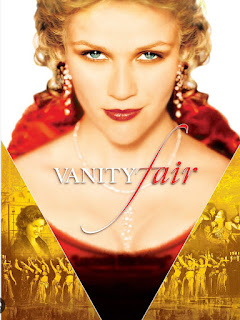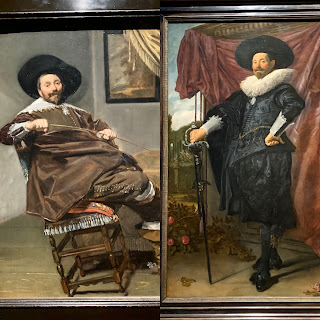We covered a lot of ground on our girls’ trip to San Sebastián in November of 2017, so I felt I had a good grasp of the place. Switching neighbourhoods, however, can open up whole new horizons on a destination. That was our experience in Antiguo, on the opposite side of the bay from my 2017 base east of the trendy Gros neighbourhood. There were so many new things to explore in this area that I spent more than half of our visit in this less touristy part of town.
We’d spotted three points of interest across the water back in 2017: the beach, a former palace and a mountain top. I wandered around all three.
Ondaretta Beach has the same golden sands, generous depth from shore to surf and easy shallows for paddling as does the beach closer to the old town. But these western sands are separated from that more touristy beach by a jagged outcrop of rocks at all but low tide. Guidebooks say this side is always less crowded and more local, and what I saw validated that. We arrived on a warm, sunny Wednesday afternoon and I should have immediately changed into my bathing costume and headed for the beach. I didn't, and the rest of our free time there was blustery with cool winds and rain. So I can confirm that it's a wonderful beach for a long, barefoot stroll along the tide line but I never took a proper swim.
I'd skipped the swim in favour of exploring the gardens at Miramar Palace. Guidebooks warned that the property, now owned by the town, often closed for special events and the San Sebastian film festival was about to start. I suspected, and was proven right, that the place would soon be given over to movie types so I thought I should get in while I could.
Less traditional palace and more 19th century Bavarian hunting lodge (above), Miramar sits on a hill surrounded by parkland on the western curve of the bay. It is a major feature of the view when you're looking out from the old town. It was the summer HQ of Queen Regent Maria Christina, who's the person most responsible for turning San Sebastian from an insignificant fishing village to the fashionable 19th century resort that laid the foundations of today's city. The young Austrian princess came to Spain to marry her much older husband, then ended up running the place from his death in 1886 to her son's accession to the throne in 1902. (Alfonso XII was born six months after his father died.) Doctors had recommended sea bathing for her health, and she liked the idea of raising her son away from the pressures of Madrid, so the family descended upon this then-tiny place and built a summer home.
Both the house and gardens are supposed to be "in the English style", though if you're from England you'll think they missed that brief. The garden is mostly lawns and trees, with a few flower beds mostly planted with bright annuals. Garden tourism isn't why you come up here, however. It's the views. Whether you go all the way up to the house and settle on comfortable benches taking in the sweep of land and sea, or clamber down to the bottom where a walkway juts out atop those rocks that separate the beaches, this is one of the best places from which to drink in the beauty of San Sebastian. Plenty of tourists were walking through, usually with local guides, but most of the people up here seemed to be locals lounging on the benches or stretched out on blankets on the lawns for a lazy afternoon in the sun. I settled down to a bit of sketching.

Besides Miramar, the other thing that dominates your view when you look west from the old town is Monte Igeldo. San Sebastian's magnificent La Concha bay is defined by hills. The broad, crescent shaped bay ends with pinnacles on each side, while a third sits in the middle of the water between them. This natural breakwater is what makes the beaches behind it so marvellously placid. Of the three waterfront peaks, Igeldo to the west is the highest.

Developers poured in after the Queen Regent made this place her summer capital, and one of their early investments was the funicular railway up to Igeldo's peak. The experience today is the same you would have had when it opened in 1912: the same gracious station a the bottom, the same wooden cars climbing the hill and the same spectacular observation balconies up top. The €4.25 return ticket may be a bit more, proportionally, than our ancestors laid out, but it's still quite reasonable for an ascent to an impressive view. As a comparison, going to the top of the Eiffel Tower will cost you €28.30, London's Shard £32 and a return trip on the Alpine railway up the Gornergrat around €100. So Igeldo is a bit of a bargain, really.
Which is just as well, as there's nothing much up here besides the views. The historic amusement park much celebrated in local travel literature is a small handful of modest fairground rides. Granted, the amusements were already closed for the season when I walked around and therefore it was all a bit sad, but it was hard to imagine much improvement even with kids queuing up. It's less Copenhagen's Tivoli, more the travelling carnival that might turn up on your village common. There's a Mercure Hotel at the peak which is, sadly, a brutalist concrete bunker at odds with all the gorgeous Fin de siècle architecture below. We were originally going to stay here but it was sold out because of the film festival. Now that I've seen it I'm relieved we were in a livelier part of town.
A pintxos bar takes pride of place, wrapping around the base of the hotel and taking all the windows and patio space with the best views. The pintxos were the least impressive I had on the trip. They make no effort, simply slapping a few basic ingredients on slices of baguette, but at least they don't jack the prices up to stupid levels because of the view. Settling in with a glass of wine and a few snacks to watch the bay below is definitely the highlight of the ride, even if the pintxos are sub par.

Down below, the Antiguo neighbourhood is a delight to stroll around. It's not touristy at all, rather packed with affluent-looking residents going about their days. The university district starts on its western edge, so there's also a young, lively feel about the place. There are plenty of comfortable bars with big display cases of pintxos, perhaps not as gourmet at the places in the old town but reeking with authenticity. And you're likely to the be only foreigner in the place. There's also a curiously high number of gorgeous bakeries full of tempting products, many using Basque flags to indicate which items, like the famous cheesecake, are regional specialties. Like its culinary doppelgänger Copenhagen, San Sebastian seems to have a way with pastry.
My favourite part of the neighbourhood was about five square blocks directly behind the beach, nestled up against the slope of Monte Igeldo. This was clearly once an area of urban mansions built in the early 20th century so people who mattered could be close to the Queen Regent. While many have been torn down and replaced with modern buildings, there are enough left to reward a walk up and down each street in the neighbourhood. Some have become offices of doctors and lawyers, some luxury hotels and a fair few still residences. The style of each is different. I saw traditional Spanish villas, half-timbered hunting lodges, new-classical townhouses worthy of Paris, art nouveau fantasies and miniature castles in tune with Disney.
A long, narrow park stands between this area and the beach, dominated by a statue of the regal Maria Christina, who seems to be smugly saying "look, all of this is down to me".
Our favourite restaurant of our time in San Sebastian was just on the edge of this district, where it starts transitioning into offices and university buildings. El Bistro Ondarreta is, I am somewhat ashamed to admit, a French restaurant. I feel like I should eat local when I'm visiting a place, and certainly shouldn't prefer a foreign restaurant to the native cuisine.
Blame chef Carlos, the instructor at our Basque cooking class, who said this was the best restaurant he knew near our hotel. He was right.
The chef patron hails from Cannes, cooked at several big names in San Sebastian and then opened this cozy place with only about 10 tables and room to eat at the bar. No fusion here, we are unapologetically back in France ... though heavily the French Mediterranean, so it's not that far from Spain. I had an absolutely perfect lobster spaghetti while my husband almost wept with joy at the pork tomahawk steak. While the Spanish are obsessed by pork, he'd hit a run of overcooked examples throughout the whole trip. Here, on the last night, in a French restaurant, was the dish that finally gave the pig the love it deserved. The lime tart was a light, tangy finisher.

We stayed at Letoh Letoh, a hotel with modern, industrial chic design inside a turn of the 20th century building. The location just a few hundred yards off the beach is excellent and there’s a spacious, modern car park about 10 minutes’ walk down the same road with discounted parking. The bed was comfortable, the room air conditioning powerful and the Juliet balcony gave us a pleasant view over the street below, but I wasn’t thrilled with the lack of public spaces. Instead of lobbies or lounges, the check in desk stands between a coffee bar and a pintxos bar and restaurant. Both were clearly popular with the locals. On our rainy day, when we didn’t feel like going out, we had to decide between the room with one not particularly comfortable chair or the very noisy bars.
I really enjoyed this side of town, and would definitely choose it again. But I’d check out some of those intriguing boutique hotels in the streets with the historic mansions before I repeated a Letoh Letoh booking.









































